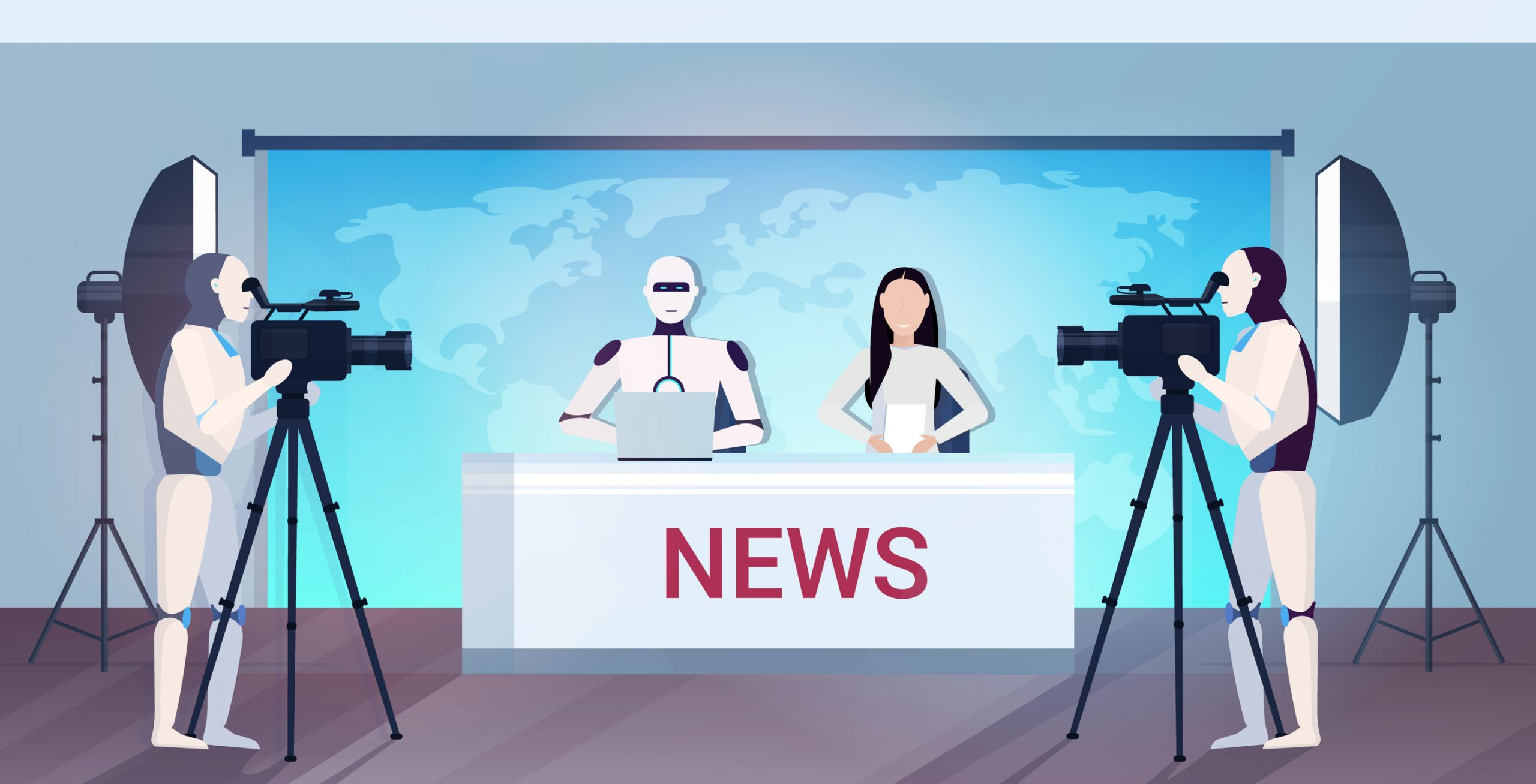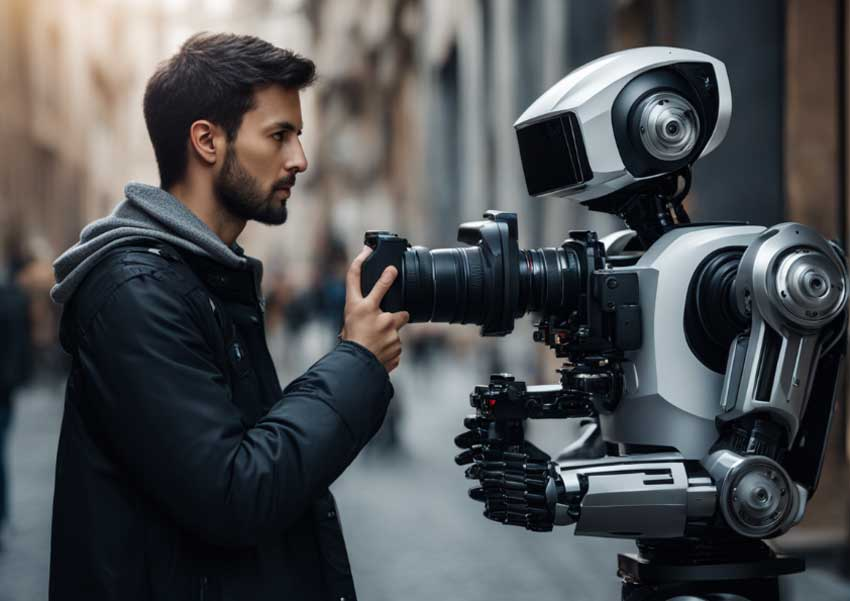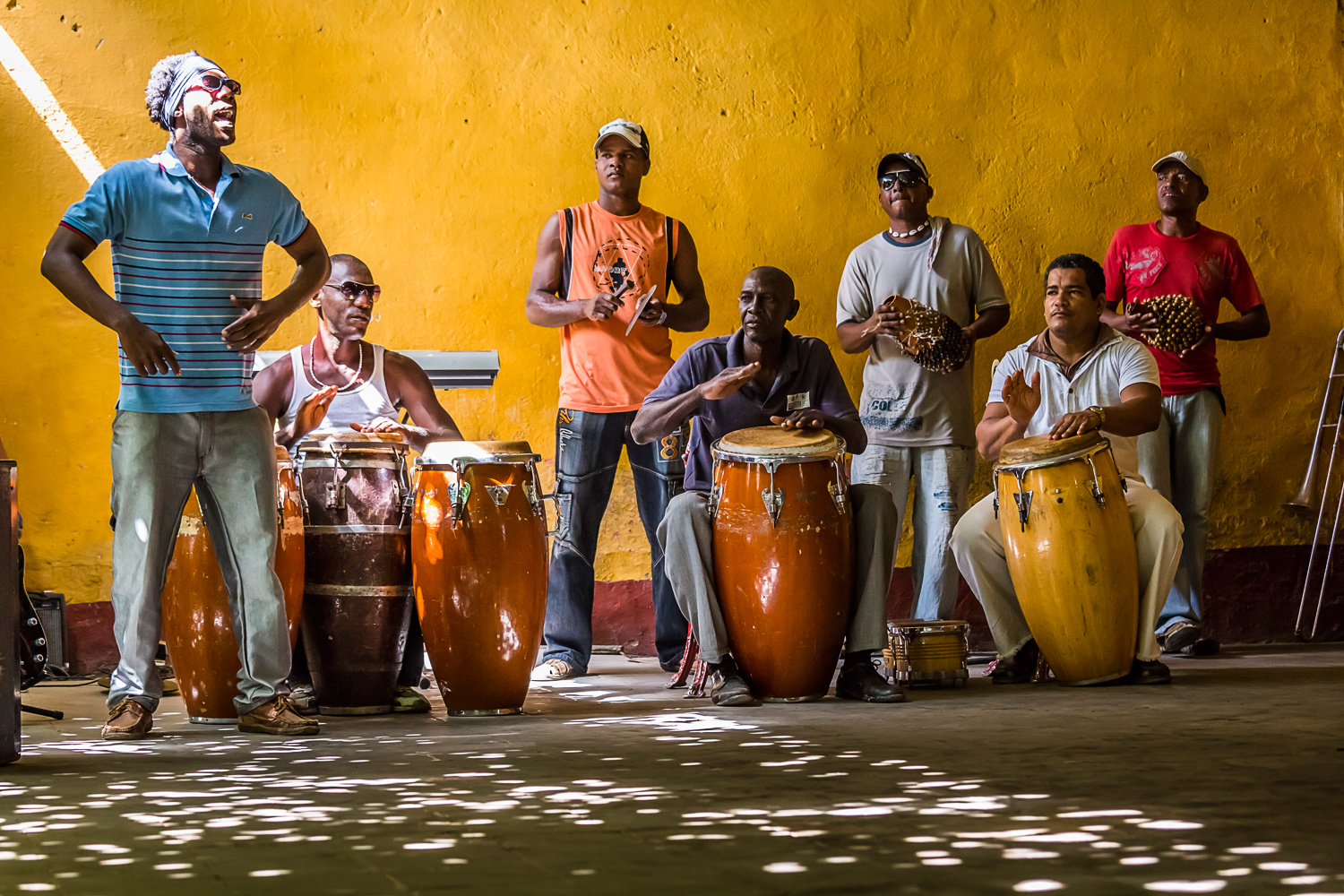Artificial intelligence in photojournalism stands at the crossroads of innovation and authenticity. As the field grapples with the challenges of AI technology in journalism, many professionals remain concerned about the potential for copyright violations and the rise of synthetic imagery that disrupts trust. Yet visionaries like Kira Pollack, with her extensive background in photography and storytelling, are exploring how AI could also be a powerful tool in preserving photo archives that document our shared history. By leveraging AI and photojournalism techniques, Pollack aims to safeguard the visual records captured by dedicated professionals, ensuring they remain accessible and meaningful for future generations. This intricate balance highlights the profound impact of AI on photography, igniting a conversation about how technology can both threaten and reinforce the integrity of visual storytelling.
The intersection of technology and visual storytelling signals a transformative era for media, particularly in the realm of image documentation. Many industry experts are increasingly attentive to the implications of AI-enhanced tools, especially in the context of historical photography preservation. Eminent figures like Kira Pollack are spearheading initiatives that utilize these technological advancements to maintain the historical significance of photo archives, emphasizing their role as pivotal narrative resources. As we navigate the evolving landscape of multimedia journalism, it’s crucial to reflect on the ethical considerations surrounding AI’s influence, particularly concerning authenticity and copyright in the art of photography. By fostering a dialogue about the future of journalism and the preservation of visual history, we can explore innovative ways to harness these emerging technologies responsibly.
The Role of AI in Modern Photography
Artificial intelligence is increasingly becoming a pivotal force in the realm of photography, particularly in photojournalism. The integration of AI technology in journalism presents both challenges and opportunities, reshaping how images are captured, processed, and preserved. While AI models can enhance photo quality and automate tasks like tagging and cataloging, they also raise pressing concerns about authenticity and copyright infringement. As photographers face the dual threat of synthesized images flooding the market, understanding how to harness AI effectively for the craft is essential.
Kira Pollack’s work serves as a notable example of how AI can be leveraged in photojournalism. By focusing on the archiving of visual history, she illustrates how AI can assist in preserving a photographer’s legacy, ensuring that their contributions are recognized and accessible. Pollack’s exploration into AI’s capability to analyze and contextualize extensive photo archives holds potential for an industry that is challenged to maintain its integrity amidst the rise of digital manipulation. Thus, the narrative surrounding AI and photography is not merely one of loss but also of recovery and innovation.
Challenges in Preserving Photo Archives
The preservation of photo archives remains one of the foremost challenges facing photojournalism today. Many invaluable images collected by photojournalists over decades lie dormant and unseen. There is a pressing urgency to safeguard this vast cultural asset as new technologies threaten to erase the historical context that these images provide. Pollack emphasizes that while many of the defining photos of our era are at risk, the mere act of archiving can be misconceived as mundane, often deterring attention from its vital importance to society.
Innovative strategies are necessary to bridge the gap between traditional archiving practices and modern technology. By incorporating AI, photojournalists can efficiently catalog their work, making it more discoverable and accessible. AI tools can sift through thousands of images to create organized repositories that showcase a photographer’s intent and the narratives behind their work. This integration is not just about storage but also enhances the storytelling aspect, giving context to images that otherwise remain silent in digital vaults.
The Impact of AI on Photography Ethics
With the rapid evolution of AI technology in photography, ethical dilemmas abound. Principal among these is the question of image authenticity; as generative AI can create realistic images, distinguishing between manipulated and original photographs becomes increasingly difficult. This erosion of trust in visual media poses significant risks for photojournalism, which relies fundamentally on the credibility of images to report on important events.
In light of these challenges, Pollack’s research addresses the potential of AI not merely as a tool for creation but as a guardian of photojournalism’s integrity. By focusing on the ethical implications of AI’s use in photography, she recognizes the need for clear guidelines and responsible practices. The goal is to empower photojournalists to utilize these technologies without compromising trust or the core principles of their work: truth, memory, and authorship.
AI and Photojournalism: A Dubious Relationship
The relationship between AI and photojournalism is peculiar and often contentious. While AI technologies promise efficiency and new capabilities for photographers, they also pose existential threats, such as copyright issues and the dissemination of synthetic imagery. As the general public grapples with these changes, the photojournalism community is tasked with finding a balance between embracing AI innovations and maintaining the integrity of their visual storytelling.
Pollack’s work illuminates the complexities of this relationship, highlighting how AI can act as both a disruptive force and a potential ally in the realm of photojournalism. By exploring methods to ethically use AI for preservation and organization of photo archives, she seeks to navigate the murky waters of trust and authenticity. Her mission underscores a crucial narrative: while AI may challenge the foundations of photography, it also offers tools to safeguard the visual record for future generations.
The Future of AI Technology in Journalism
As journalism continues to adapt to rapid technological advancements, AI technology stands out as a transformative element. The potential it holds for enhancing various aspects of the industry, from article generation to image curation, may redefine our daily interaction with news. However, for AI to be truly effective in journalism, it must be employed responsibly and with a focus on ethical standards, ensuring it serves to enhance rather than detract from the quality of reporting.
Pollack’s rigorous exploration into applying AI for the preservation of photojournalism archives exemplifies a forward-thinking approach that advocates for a thoughtful integration of technology. As journalism faces challenges in maintaining relevancy and credibility, the future may very well hinge on how effectively these new tools are utilized to uphold the values of truth and transparency. Integrating AI within ethical boundaries could pave the way for a new era in which technology enriches the craft rather than undermines it.
Navigating Copyright in the Age of AI
As AI generates new works by learning from existing images, copyright issues remain a pressing concern for photographers and journalists. The fear of unauthorized use of their images in AI training sets generates unease within the photojournalism community. Protecting the intellectual property rights of photographers is critical to fostering an environment in which they can thrive creatively and economically.
Pollack emphasizes the importance of understanding copyright limitations in this new landscape. By advocating for clear policies regarding the use of photo archives and ensuring that photojournalists are compensated for their work, the photojournalism community can navigate this complex issue effectively. Collaborating with technologists and legal experts can ignite discussions aimed at crafting fair practices that respect the rights of photographers while also leveraging AI’s capabilities to preserve and promote their invaluable work.
Understanding AI’s Limitations in Photography
While the capabilities of AI continue to expand, it is crucial to acknowledge its limitations, particularly concerning the nuances inherent in photography. AI excels in recognizing patterns and categorizing images, yet it often fails to grasp the emotional and contextual depth that human photographers bring to their work. This disconnect can lead to oversimplified interpretations of complex subjects, which can perpetuate misunderstandings and misrepresentations in news narratives.
Pollack’s research underscores the need for a human-centered approach to AI applications in photography. By utilizing AI as an analytical tool rather than a replacement, photojournalists can maintain the authenticity and depth of their storytelling. Ensuring that AI enhances rather than overshadows the rich narratives behind images is vital for preserving the essence of photojournalism in a rapidly evolving technological landscape.
From Archive to Accessibility: The New Era of Photojournalism
A key focus of Pollack’s work is turning extensive photo archives into accessible resources for the public. The digital age has revolutionized how we consume visual storytelling, but many archives remain underutilized and inaccessible. By employing AI technologies to organize and categorize these collections, photojournalists can facilitate public access to the rich history captured in their work.
Using AI, Pollack aims to enhance the discoverability of these archives, ensuring that forgotten images regain visibility and context within contemporary narratives. This opportunity not only honors the contributions of past and present photojournalists but also enriches the public’s understanding of historical events. Ultimately, transforming photo archives into accessible narratives is pivotal for both the preservation of our visual history and the continued evolution of photojournalism.
The Convergence of Technology and Storytelling
In an era defined by rapid technological advancement, the convergence of AI and storytelling in photojournalism is particularly compelling. Kira Pollack’s approach showcases how AI can enhance the storytelling capacity of photography, bridging the gap between images and the narratives they convey. By focusing on the intent behind images, Pollack aims to create immersive experiences that draw the viewer deeper into the story.
Harnessing AI to create more dynamic and interactive narratives represents a significant leap forward for photojournalism. As tools emerge that allow for more comprehensive interpretations of images, the craft has the potential to evolve dramatically. This intersection will not only influence how stories are told but also redefine audience engagement, offering new ways for the public to connect with photographic work on a profound level.
Frequently Asked Questions
What is the impact of AI on photojournalism and how can it be used to enhance photography?
AI technology in journalism has both positive and negative impacts. It poses threats like copyright violations and the creation of synthetic images that can undermine trust. However, AI can also enhance photojournalism by preserving extensive archives, organizing images, and providing contextual analysis, thereby enriching the understanding of visual stories.
How can artificial intelligence help preserve photo archives in photojournalism?
Artificial intelligence can assist in preserving photo archives by automating the cataloging process, generating contextual information for images, and enhancing discoverability. This helps to ensure that vital visual records are not lost and can be retrieved for future reference, which is crucial in maintaining the integrity of photojournalism.
What ethical concerns arise from using AI technology in journalism, particularly in photojournalism?
The use of AI technology in journalism raises ethical concerns such as unauthorized use of photographers’ work for training models, leading to potential copyright issues. It also risks blurring the lines of authenticity and trust in visual media if AI creates photorealistic images that misrepresent reality.
What role does Kira Pollack see for AI in the future of photojournalism?
Kira Pollack advocates for leveraging AI technology in journalism not to generate or distort images, but to preserve and emphasize authentic photojournalism. She believes AI can play a role in safeguarding photographers’ rights, enhancing the narrative depth of visual archives, and promoting a truthful representation of history.
How has the integration of AI affected the creative process in photojournalism?
The integration of AI in photojournalism presents a dual-sided effect on creativity. While it poses challenges by creating synthetic images that could mislead, it also opens up opportunities for experimentation and innovation in image-making, potentially leading to unique storytelling methods and visual formats.
Can AI interpret complex photojournalistic images accurately?
Yes, recent experiments have shown that AI can analyze complex photojournalistic images effectively. For instance, it can identify specific actions, contexts, and emotional nuances within conflict photography. This capability underscores AI’s potential to provide detailed insights that enhance understanding of historical events.
What are the limitations of AI technology in the context of journalism and photography?
While AI technology holds promise, it has limitations, including the inability to fully grasp the emotional depth and human elements within photography. It may struggle with interpreting nuanced narratives and contexts that require lived experience, which are essential for authentic photojournalism.
How can photographers leverage AI tools to benefit their work and archives?
Photographers can leverage AI tools to streamline the organization and management of their image archives, enhance discoverability of their work, and gain insights into viewer engagement. Additionally, AI can assist in preserving their legacy by documenting and contextualizing their contributions to visual history.
Why is the preservation of photo archives vital for the future of photojournalism?
Preserving photo archives is crucial as they serve as historical records of significant events and cultural narratives. Many images captured by photojournalists may be the only visual documentation of critical moments in time; therefore, safeguarding these archives ensures that future generations can access and learn from them.
What can be done to ethically implement AI technology in photojournalism?
To ethically implement AI technology in photojournalism, it is essential to establish guidelines that protect photographers’ rights and ownership of their work. This can involve transparent processes for using their images in AI training, ensuring proper credit and compensation, and maintaining the integrity of the original artwork.
| Key Point | Description |
|---|---|
| Impact of AI | AI poses a threat to traditional photography, including issues like copyright violations and the creation of synthetic images. |
| Opportunities in AI | AI can also serve as a tool to protect and preserve the archives of professional photojournalists, aiding the preservation of visual history. |
| Kira Pollack’s Research | Kira Pollack aims to explore how AI can help catalog and contextualize photojournalists’ work while maintaining ethical standards. |
| Case Studies | Pollack has conducted studies with photojournalist Christopher Morris using AI to analyze combat photography and provide detailed context. |
| Concerns about Credibility | While AI can aid in preservation, concerns remain about trust and the potential for AI-generated misinformation. |
| Shorenstein Fellowship Goals | Pollack hopes to engage with diverse perspectives and ensure AI reinforces the core values of photography: truth, authorship, and memory. |
Summary
Artificial intelligence in photojournalism presents both a challenge and an opportunity for the field. While it poses risks such as copyright infringement and the potential spread of misinformation, it also offers innovative solutions to preserve the integrity of photojournalism archives. Kira Pollack’s work at the Shorenstein Center highlights the importance of leveraging AI to protect visual histories, ensuring that the narratives captured by photojournalists are not lost. As technology continues to evolve, it is critical for photojournalists to find ways to integrate AI responsibly and ethically, ultimately reinforcing the foundational principles of truth and authenticity in their work.



MOST COMMENTED
Culture News
Katie Kitamura: Exploring Horror in Midlife Fiction
Culture News
Canine Empathy Research: Insights from Harvard Experts
Culture News
Introductory Humanities Courses: Engaging First-Year Students
Culture News
Canine Research: Exploring the Human-Dog Connection
Culture News
Introductory Humanities Courses Engaging First-Year Students
Culture News
Afro-Cuban Music: Yosvany Terry’s Cultural Explorations
Culture News
Artificial Intelligence in Photojournalism: A New Hope